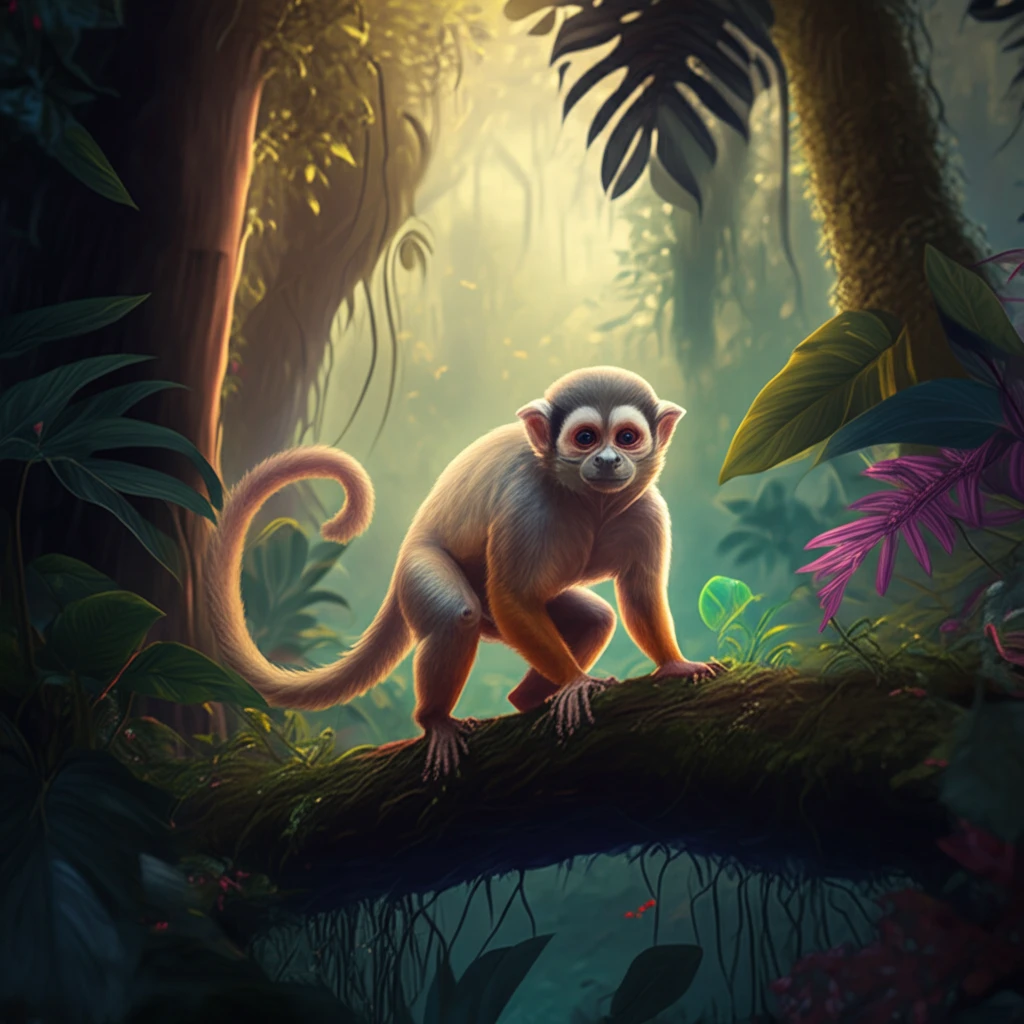
Unveiling the Secrets of the Squirrel Monkey: A Comprehensive Guide to Female Anatomy
"Discover the unique reproductive anatomy of female squirrel monkeys and how this knowledge can aid conservation efforts."
The squirrel monkey (Saimiri sciureus), a small primate native to the tropical forests of South America, has captivated researchers and nature enthusiasts alike. Often used as a model organism in biological studies, the squirrel monkey's reproductive biology remains an area ripe for exploration. Understanding the intricacies of their anatomy, particularly the female urogenital system, is crucial for successful captive breeding programs and conservation efforts.
A recent study delved into the macroscopic morphology and morphometry of the female squirrel monkey's urogenital apparatus, providing valuable insights into the structure and function of these essential organs. This research not only expands our anatomical knowledge but also offers practical data for refining assisted reproductive techniques.
This article aims to break down the key findings of this study, presenting a comprehensive yet accessible overview of the female squirrel monkey's reproductive anatomy. By bridging the gap between scientific research and general understanding, we hope to illuminate the importance of this knowledge for the continued survival and well-being of these fascinating primates.
What Does the Female Squirrel Monkey Urogenital System Look Like?

The study meticulously examined the urogenital systems of four young female squirrel monkeys, all born in captivity at the Centro Nacional de Primatas. The researchers focused on macroscopic observations, carefully dissecting and measuring various components of the reproductive tract. Here’s a breakdown of their key findings:
- Vulva: Delicately structured and positioned ventrally to the clitoris.
- Clitoris: Well-developed, sometimes making sexing difficult. Average length is 6.7mm.
- Vagina: Functions as a relatively long canal (averaging 10.3mm) with thin walls, compressed dorsoventrally.
- Vestibule: A short, distinct segment with thicker muscular walls that leads into the vagina. Average length is 1.7mm.
- Cervix: Features a thick muscular wall but is short in length, averaging 5mm.
- Uterus: Single, with a globular fundus situated cranially to the uterine tubes. Average length is 63mm.
- Uterine Tubes: Thin and straight, extending towards the ovaries. Average length for both tubes is around 15mm.
- Ovaries: Ellipsoid in shape, positioned near the uterine tubes and attached via the mesovarium. The right ovary measured approximately 3.7mm wide, 6.0mm long, and 3.3mm high, while the left ovary was slightly larger at 4.0mm wide, 6.3mm long, and 3.0mm high.
Why Does This Detailed Anatomy Matter?
Understanding the intricate details of the female squirrel monkey's urogenital system is essential for several reasons. Firstly, it provides a foundation for comparative studies, allowing us to better understand the reproductive strategies of different primate species. Secondly, this knowledge is crucial for optimizing assisted reproductive techniques in captive breeding programs, which are vital for maintaining genetic diversity and ensuring the long-term survival of this species. Finally, by shedding light on the unique adaptations of the squirrel monkey, we can foster a greater appreciation for the biodiversity of our planet and the importance of conservation efforts.
